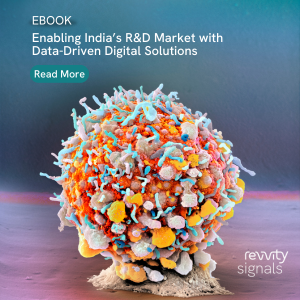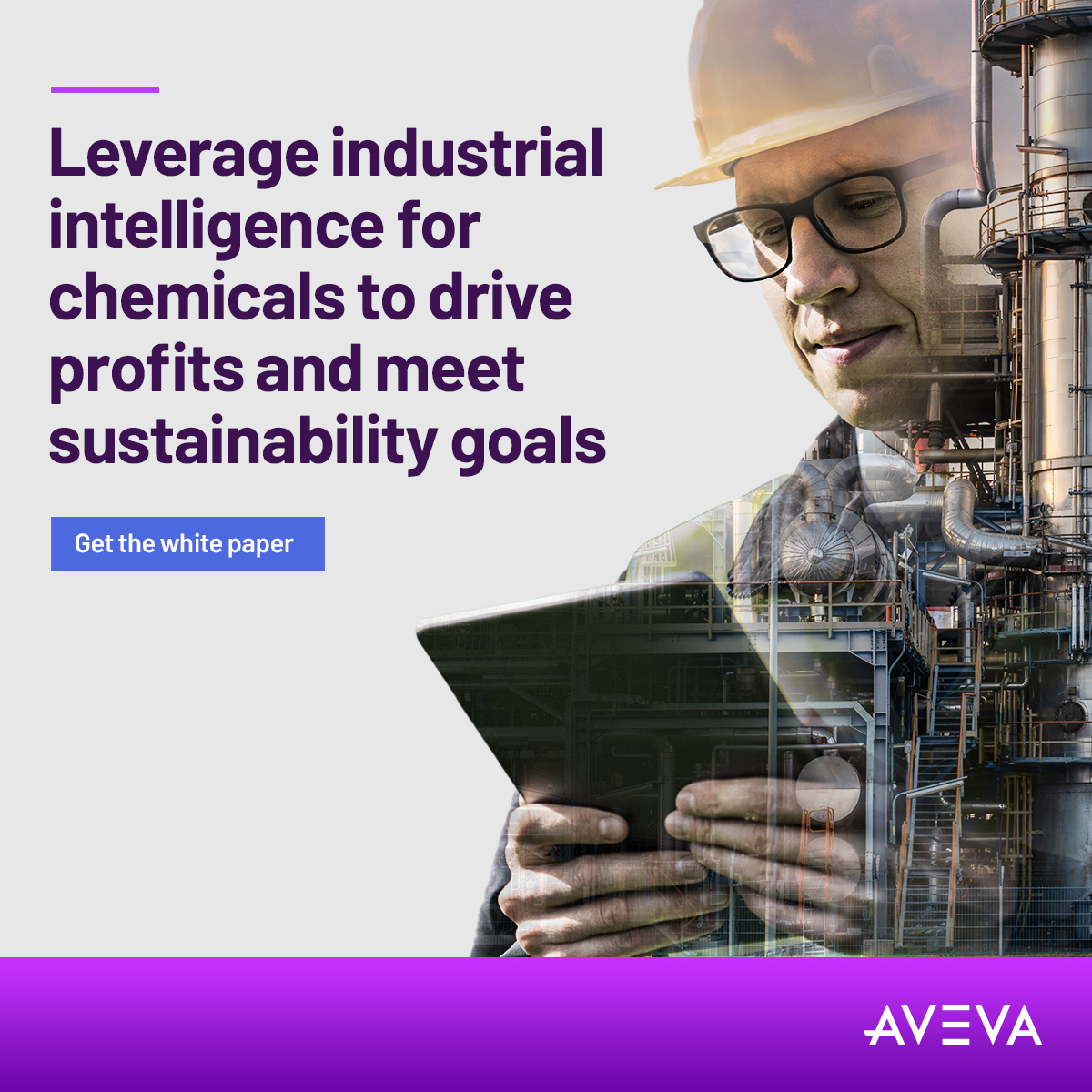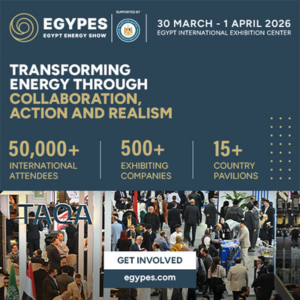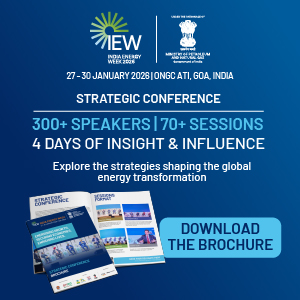Gallery
December 09, 2025
India must expand its chemical exports to Russia: Manish Kumar, Vice-Chairman, Moscow Chamber of Commerce, Indian Commission; and President, Soltex Group
In an exclusive interview with Pravin Prashant, Executive Editor, Indian Chemical News, Manish Kumar, Vice-Chairman, Moscow Chamber of Commerce, Indian Commission; and President, Soltex Group shared insights on Indo-Russian trade imbalance, deeper collaboration, fertilizer MoU, untapped opportunities, hydrogen, ports & shipping, and skilled manpower. Excerpts of the interview:
India and Russia have set a target of US $100 billion in annual bilateral trade by 2030. Given the current imbalance, India’s imports from Russia stand at US $63.8 billion whereas exports stand at US $4.9 billion. How realistic is this goal and how can we achieve it?
Earlier, we wondered how we would ever reach US $20 or $30 billion in trade, but the geopolitical landscape has changed rapidly. Today, the target has shifted to US $100 billion. The real challenge, however, is the trade imbalance as India exports only about US $5 billion to Russia. To realistically move towards US $100 billion, the Indian business community must take a proactive approach and actively explore emerging opportunities.
The recent visit of President Vladimir Putin, along with nine ministers, shows Russia’s strong interest in engaging with India’s economy. Now it is India’s turn. Our businesses must decide whether they want to stay hesitant because of sanctions or actively engage with Russia. Without the participation of the Indian industry, this target cannot be achieved. Increasing crude oil imports alone will not solve the problem. India must expand its exports in organic chemicals, speciality chemicals, technical textiles, food products, processed food, and many more. Services and skilled manpower should also be considered. If Indian companies look seriously at all these areas, achieving the US $100 billion target becomes possible.
Keeping in view the US sanctions on Russia, how do you see the current situation for India?
There is information circulating that the US has now softened or toned down certain aspects of the sanctions, that’s today’s news. Ultimately, this comes down to political will, and our leadership has made it clear that India’s national interest comes first. With a population of 1.5 billion, energy security is absolutely critical for us. We understand the geopolitical dynamics but India cannot be singled out. If Europe is buying more oil and if the US itself is indirectly sourcing Russian oil, why should India be pressured? It feels discriminatory that barriers are being created to dissuade India from doing business, especially in oil, gas, and petrochemicals. There are many opportunities in this sector, as I have explained earlier, and I don’t think India should reduce oil imports from Russia.
But beyond oil, there are many other industries such as lubricants, base oils, and numerous products, where Indian companies can engage with Russia. What’s needed is stronger communication between the two governments and industry bodies to ease the processes on both sides. At this point, one cannot complain about lack of finance or logistics; the real gap has been communication.
A common question arises is why did it take so long for India and Russia to expand their economic relationship, given the long-standing friendship between the two countries?
India and Russia have been close friends for a long time but the cooperation remained largely in the defence and nuclear sectors. On the business side, despite ideological alignment, Indian companies did not adapt well to Russian business norms and work culture. That is why Indian companies lagged behind, even as American and European companies, large and mid-sized, were successfully doing business in Russia. To succeed, we must understand their culture, their systems, and adapt accordingly.
How can the Indian chemical fraternity benefit from deeper collaboration with Russia?
The chemical industry must recognize that Russia is extremely rich in petrochemical resources such as crude, natural gas, ethylene, and other key feedstocks. There are many intermediates and molecules where Indian companies can collaborate with Russian producers. So far, the main example is the Reliance–SIBUR joint venture for elastomers. But there is room for many more collaborations. Russia can supply raw materials for Indian refineries and polymer producers for products like hexane derivatives, phenol, maleic anhydride, methyl acrylate, glycerine, butanol, methyl ethyl ketone, and many others. These can be sourced at competitive prices, especially since Russia’s exposure to European markets has reduced.
Indian companies can consider setting up projects in Russia, establishing joint ventures, or sourcing basic raw materials for value addition in India and then re-exporting to global markets. Even in pharmaceuticals, Russia can supply certain bulk drugs, for example, HSN hydroxy methyl compounds. There are many avenues for collaboration.
What is stopping Indian companies, whether in chemicals, pharmaceuticals, or petrochemicals from engaging with Russian companies in a big way?
The main issue is lack of accurate information. Perceptions have been created, especially by Western media, about Russia’s systems, stability, logistics, and finance. But the reality is different. Everything is functioning smoothly. After the recent visit, it is even clearer: three to four major Russian banks are already operating in India, enabling direct trade in rupees and ruble. There is no dependence on SWIFT or the US dollar. Logistics are working efficiently, shipments from Indian ports to Western Russian ports take about 20 days. Regular services operate between Saint Petersburg/Vladivostok and Indian ports like Nhava Sheva and Mundra.
Insurance is available and end-to-end logistics services exist. There are no technical obstacles related to finance or transport. The real question is whether Indian companies are willing to engage, or whether they are unnecessarily worried about sanctions. The fact is, China is doing business with Russia. Turkey is doing business with Russia. Many others are too. So why not India?
Following the recent MoU on joint ventures in the fertilizer sector, what commitments and timelines have been set for establishing fertilizer production units in Russia by Indian companies to ensure long-term supply security for India?
The recent MoU and the joint declaration clearly indicate that major Russian companies are ready to partner with Indian firms. This means the projects will certainly move forward, but establishing fertilizer units requires detailed assessments and groundwork. Realistically, it may take one to two years for these projects to materialize on the ground.
Beyond this MoU, several Russian regions have also approached us with offers involving existing fertilizer plants seeking Indian investors, particularly because they prefer Indian partners over Chinese investors. They want Indian companies to invest, modernize the assets, and secure long-term offtake agreements. India depends heavily on imports of fertilizers such as NPK, urea, and other nutrients. The opportunity is significant, and if any Indian company is interested, we can connect them with the right authorities and stakeholders in Russia.
On sustainable fuel, how can India and Russia collaborate on hydrogen which is currently one of the hottest verticals?
The world is clearly moving toward green technology and reducing carbon footprint is a global priority. Green hydrogen is a major focus area. Russia has strong technological know-how in green hydrogen and there are many areas where their expertise can help India fast track progress. With collaboration, both countries can shorten R&D cycles and accelerate deployment. It makes perfect sense.
How can the Indian ports and shipping sector leverage MoU signed between India’s Ministry of Ports, Shipping and Waterways and the Maritime Board of the Russian Federation?
Russia has a strong shipbuilding ecosystem across several regions. They have numerous shipbuilding units and decades of experience, India itself has earlier procured vessels from Russia. They possess valuable knowledge and technology that can support India’s efforts to expand port infrastructure and strengthen shipbuilding. The government’s focus on developing more ports aligns well with Russian expertise. With the MoU in place, Russian companies are ready to share their knowledge base, creating a win-win situation for both nations.
How do you view the agreement of cooperation between the University of Mumbai, Lomonosov Moscow State University, and the Russian Direct Investment Fund (RDIF)? How will it help both countries?
RDIF is one of Russia’s largest sovereign funds and played a key role in investments for the Sputnik vaccine. They are well-funded, have strong fundamentals, and are keen to work with Indian companies. Lomonosov Moscow State University has a tremendous scientific knowledge base, decades of research, innovation, and patents across carbon fibres, molecules, technical textiles, and more. Such institutional-level collaborations are extremely beneficial. However, I believe one such partnership is not enough. We need more collaborations across petrochemicals, defence, composites, metallurgy, and other sectors.
Lastly, there is a labour shortage in Russia. How can India help in utilising these opportunities?
India has strong capabilities in the services sector and in training skilled manpower. With initiatives like Skill India, the talent pool is growing. During the summit, Russia eased several migration norms. Earlier, migrant workers were required to know Russian language and history, which was unrealistic for short-term contracts. These norms have now been relaxed for Indian citizens. The quota system has also been expanded and more announcements are expected.
Our group has already created a joint institute with a Russian organisation to train Indian professionals such as welders, for example, using Russian curriculum, standards, and even Russian welding machines are imported here for training. The same model will be used for robotics, drones, and other sectors where Russia needs skilled professionals. We train them in India and then facilitate their employment in Russia. So there are huge opportunities for skilled Indian manpower.
In a nutshell, how do you see the India–Russia partnership moving forward?
It is a win for both nations. We need deeper collaboration, more communication, and consistent engagement. As these efforts take shape, we will see concrete developments on the ground. This will not only strengthen bilateral relations but also help reduce the trade deficit and move us towards the target of US $100 billion in trade by 2030.
September 30, 2025
Planning to expand our operations beyond India: Rajive Shah, MD, Sauradip Chemical Industries
Key milestones achieved by Sauradip Chemical Industries in 2024?
As of 2024, Sauradip Chemical Industries has made considerable advancements in its dedication to sustainability, innovation, and growth. The company is targeting Rs 1,000 crore in revenue over the next five years, fueled by effective strategies in sustainability and product innovation.
The company has adopted sustainability and green initiatives such as zero discharge manufacturing and development of eco-friendly products. Sauradip allocates 6-7 per cent of its revenue to research and development, fostering the creation of sustainable and innovative products while maintaining a competitive edge. Besides enhanced market presence, Sauradip earned recognition in 2024 for its outstanding contributions to sustainability, green chemistry, and innovation, affirming its leadership in environmental responsibility.
How has been the overall performance of Sauradip in 2024 and what is the expectation from 2025
In 2024, Sauradip Chemical Industries delivered impressive results, driven by its focus on sustainability, innovation, and expanding market reach. The company saw solid growth and set an ambitious goal to achieve Rs. 1,000 crore in revenue over the next five years. This progress is supported by a broader product range and entry into new markets. Sauradip concentrated on expanding its range of eco-friendly products, notably biodegradable surfactants like Alkyl Polyglucoside (APGs), which have gained popularity in industries such as cosmetics, personal care, and textiles.
The company has committed to a zero discharge manufacturing process, emphasizing environmental responsibility. Sauradip strengthened its position as a leading supplier of green chemical solutions, both in India and internationally.
In 2025, we will continue growing our portfolio of sustainable surfactants and bio-based chemicals to meet the rising demand for eco-friendly solutions. The company will prioritize green technologies, further solidifying its commitment to sustainability. We will focus on expanding into international markets, particularly in Europe and North America, where demand for sustainable products is strong. Strengthening partnerships with like-minded companies and industries focused on sustainability will open up new avenues for growth.
Is Sauradip Chemical collaborating with industry bodies or academic institutions on sustainability initiatives?
Sauradip Chemical Industries actively partners with both industry organizations and academic institutions to advance sustainability efforts. Notably, the company has supported infrastructure upgrades at the Institute of Chemical Technology (ICT) in Mumbai and launched a Visiting Fellowship Lecture series to strengthen connections between academia and industry. Chairman Dr. Kishore Shah emphasizes the importance of collaboration and the creation of chemical clusters to drive innovation and sustainable development.
Do you see bio-based chemicals replacing conventional ones in the near future?
Bio-based chemicals present a promising alternative to traditional petrochemical-derived substances, driven by the need for more sustainable solutions, efforts to cut carbon emissions, and growing consumer interest in environmentally friendly products. Although the transition is gaining traction, it still faces several hurdles.
Key drivers behind the shift to bio-based chemicals include environmental advantages such as lower carbon footprint and reduced environmental impact. Unlike fossil fuels, bio-based chemicals are made from renewable biomass, supporting long-term sustainability. Consumers and governments are pushing for greener, safer alternatives. Breakthroughs in biotechnology and green chemistry are enhancing the efficiency and affordability of bio-based solutions.
Barriers to wider adoption include higher production costs. Competing with low-cost petrochemicals remains a challenge. Availability, scalability, and responsible land use for biomass must be carefully managed. Ensuring that bio-based chemicals match or exceed the performance of conventional options is critical.
In terms of strategies for moving forward, continued innovation is key to improving efficiency and reducing costs. Public - private partnerships can accelerate development and market entry. As consumer awareness grows, demand will help drive scale and investment.
How does Sauradip manage hazardous waste disposal in an environmentally responsible way?
Sauradip Chemical Industries demonstrates a strong commitment to environmental care, especially in handling hazardous waste. Their production methods are designed for zero liquid discharge and effluent-free operations, effectively eliminating the risk of environmental pollution. They also provide products such as dust control agents, which assist other industries in minimizing waste and cutting down emissions.
Emphasizing sustainability, Sauradip allocates 6–7 per cent of its revenue toward research focused on developing non-toxic and eco-friendly solutions. These innovations not only support environmental goals but also help industries manage costs. In essence, Sauradip integrates clean manufacturing, green product offerings, and continuous innovation to drive responsible waste management and environmental sustainability.
What initiatives has Sauradip taken to reduce waste and improve recycling?
Sauradip is dedicated to minimizing environmental impact by implementing a range of important sustainability measures, including achieving zero discharge and effluent-free production processes; and encouraging eco-friendly practices via social media campaigns.
These efforts underscore the company's strong commitment to environmental responsibility, focusing on waste reduction, increased recycling, and the broader adoption of sustainable practices within the chemical sector.
What steps are being taken to reduce the carbon footprint of your manufacturing process?
Sauradip is focused on lowering the carbon impact of its manufacturing activities through a series of targeted initiatives, including adoption of environmentally friendly technologies; designing products and processes to minimize carbon emissions; and promoting Eco-conscious events like the "Green Living Fair," Sauradip fosters awareness and engagement in sustainability among stakeholders.
These actions reflect the company's strong commitment to embedding sustainable practices into its core operations, with the goal of reducing carbon emissions and championing environmental stewardship.
How do you ensure that your raw materials are sustainably sourced?
To ensure that raw materials are sourced responsibly and sustainably, Sauradip Chemical Industries generally adopt a range of essential strategies including supplier evaluations and sustainability certifications often validated through certifications like Fair Trade, FSC, or ISO 14001; maintaining transparency and traceability to track the origin of raw materials and ensure clarity throughout the supply chain.
Other measures include collaborating with eco-friendly suppliers, focusing on renewable Inputs, advancing Green Chemistry, following ethical and environmental guidelines, and commitment to ongoing Improvement.
What role does R&D play in making your products more ecofriendly?
R&D plays a crucial role in driving Sauradip’s efforts to make their products more eco-friendly. By encouraging innovation and promoting sustainability, R&D is central to enhancing both the company’s product lines and manufacturing processes. Our projects focus on creation of non-toxic, eco-friendly products; non-toxic chemicals, eco-friendly alternatives including products like Alkyl Polyglucosides (APGs), which are biodegradable and renewable; minimizing environmental impact in production through zero discharge technologies and energy-efficient production; sourcing sustainable raw materials and formulations such as bio-based feedstocks and sustainable formulations; assessing product life cycle including eco-conscious design, and recycling and reuse; collaborations with industry and academia including innovation partnerships and sustainable client ssolutions and innovations in waste reduction and recycling.
With sustainability as a core business strategy, Sauradip prioritizes sustainability within its business model. Our R&D initiatives are vital to enhancing the eco-friendliness of products. Through advances in non-toxic chemicals, sustainable manufacturing practices, and waste reduction, the company is committed to reducing its environmental impact and reinforcing its dedication to sustainability in the chemical industry.
How is Sauradip implementing green chemistry principles in product development?
Sauradip Chemical Industries integrates green chemistry principles into its product development to enhance environmental sustainability. Sauradip produces items such as APGs from renewable, plant-based materials, replacing traditional petrochemical surfactants. This approach promotes the use of sustainable raw materials and helps minimize the ecological footprint.
The company adopts green technologies that aim to minimize waste generation and harmful emissions during production. Sauradip designs products that are non-toxic, biodegradable, and safe for the environment.
Sauradip Chemical Industries embodies green chemistry by prioritizing sustainable practices like utilizing renewable feedstocks, cutting down on waste, and ensuring safer, more eco-friendly chemical products.
How does Sauradip balance profitability with sustainability?
Sauradip Chemical Industries skillfully balances financial success with environmental responsibility by incorporating sustainable practices into its business operations. Our key approaches include development of eco-conscious products; cost efficiency through green manufacturing; capitalizing on the market demand for sustainable solution; promoting circular economy and reducing waste; building strategic partnerships and obtaining certifications; and commitment to long-term sustainability.
How has Sauradip integrated sustainability into its core strategy?
Sauradip Chemical Industries has effectively woven sustainability into its core strategy by implementing several key initiatives that align environmental stewardship with its business objectives. These efforts are reflected in their product development, manufacturing processes, research and development, and overall corporate vision.
Sauradip prioritizes the creation of biodegradable, plant-based products like Alkyl Polyglucoside, providing non-toxic alternatives to meet the increasing demand for sustainable solutions. We also invest in R&D for sustainable innovations; zero discharge manufacturing practices; commit to circular economy and waste minimization; ethical sourcing of raw materials; energy-efficient operational practices and sustainability as a catalyst for business growth.
Sauradip’s ambitious goal of reaching Rs 1,000 crore in revenue within five years highlights how sustainability serves as a driver for long-term business success, market expansion, and enhanced brand reputation.

















